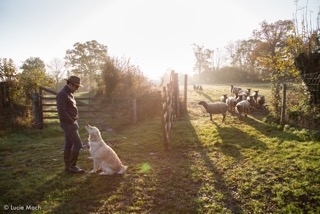As dry January is long gone (yoo-hoo!) I want to take this opportunity to talk about this fascinating and intriguing cider: Pilton In Touch (keeved).
Before dropping you lines of tasting notes though, I'd like to take a moment and a step back to make a small, brief introduction to this mysterious, enchanting world of keeved ciders.
The keeving method, a widely accepted way to produce cider in the northwest of France, involves a long and slow fermentation process to get naturally sweetened sparkling ciders. Here in this part of France, matured, overriped bittersweet apples (low in nutrients but high in tannins) are essential in the production process to achieve a successful keeved cider.
The keeving process involves the formation of pectin gel which floats to the top of the freshly pressed apple juice. This 'jelly layer' – or the so called ”Chapeau Brun” in the french terminology – traps the nitrogen (essential for the yeast's growth) and is consequently removed. In this way the wild yeasts that are starving because of the lack of nutrients, are slowed down and so the fermentation process is therefore being stopped.
The final result will be a cider with a bit more body and structure compared to the others (as yeasts have not processed all of the sugar from the apple juice); a “naturally sweet [cider] through the lack of nutrients” as reported by Martin Berkeley, owner of Pilton.
Pilton "In Touch" is a Pinot Noir skin contact keeved cider produced in Somerset, UK – the name might already blow your mind!
We are talking about a sparkling fine cider made from a blend of naturally sweet keeved ciders from the season 2018 & 2019 in contact with Pinot Noir grapes skins from the neighbor Dunleavy Vineyards.
This cider at first is quite rich with fruity, sweet apples notes coming through, creamy and intense on the nose. All these flavors can be found on the palate starting off with fruity aromas, giving a jammy feeling almost sticky but counterbalanced by the dry, crisp notes of the bittersweet apple. It gives lingering, tannic tones – given by the Pinot Noir grape skins and some oxidative notes (reminiscent of the oloroso sherry) carried out on the finish.
Fascinating that each sip is giving you a different feeling with different flavours.
Overall it is a complex yet well-balanced, well layered cider that can be a very good friend with cheese in general, even better with nice creamy, runny, white goat or cow cheeses.
Not so crazy in funkiness, so I consider it quite suitable for everyone even though it will satisfy more the ones with a daring palate.
And for those ones who are not that brave, if I were you I would definitely give it a try anyway!

German ciders & poirés
Outside Germany few people are aware that, here, cider tradition even exists and that Frankfurt is the beating heart for ciders and perries. Particularly in this region the fruit production is one of the richest in Germany.Have you ever heard about German ciders?Ciders in Germany are better known as Apfelwine



